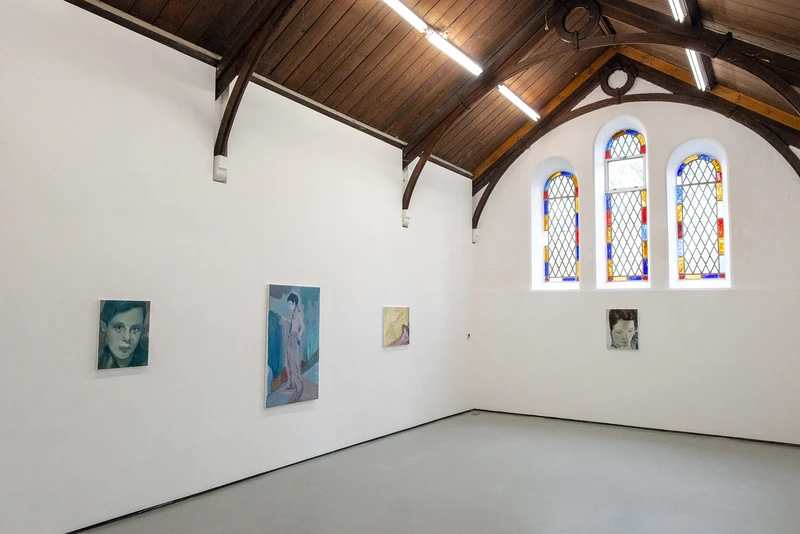Kaye Donachie
28 Aug-31 Oct 2021


“Every time I look away she changes. An unknown force paralyses me as I draw…. suddenly, scales fall from my eyes. Madame Lani fait mon portrait! She is painting me.” - Jean Cocteau notes on Maria Lani, 1929.
Lismore Castle Arts is delighted to present a solo exhibition by Kaye Donachie at St Carthage Hall.
Kaye Donachie’s paintings pay tribute to a cast of historical female figures. Modernist performers, futurist actresses and non-conformist poets become protagonists connected by their unconventional beliefs and preferences. The paintings recognise the allure of these individuals and the extent to which they have stimulated Donachie to illuminate their specific histories, posing questions such as what it is to be present, to be active, to have a voice, and to assume ultimately, some measure of control over creative and emotional labour.
Donachie revisits people and places that acted as a magnet for the convergence of ideas and experiments in avant-garde aesthetics and living. Her paintings use portraiture and landscape to figure reformist philosophies and weave a feminine counter narrative.
For Lismore, Donachie has created a new body of work ‘Into the Thousand Mirrors’ which figures the extraordinary character of Maria Lani. In 1928 Lani arrived in Paris and introduced herself as a silent film actress, inspiring Thomas Mann to co -author a film script called ‘The Woman of the Hundred Faces’. The scenario required multiple artistic representations of the same model. The works were made by Man Ray, Matisse, Picabia, Delaunay and many other artists working at that time. The film never materialised, and Maria Lani disappeared, her life translating into fiction and subsequent exhibition by Cocteau in 1929.
Donachie depicts a cast of alternative protagonists from the perspective of the model or sitter as they gaze in reverie and stare back at their surroundings and audience. Lani’s narrative and elusiveness, her ability to evade capture, are a stimulus for Donachie’s approach in conjuring historical and literary figures through painting. In Donachie’s paintings the subjects seem to dissolve into a haze as a result of her unique, light and concise touch, and her limited but subtle range of colours. A tonality often prevails through shades, hues and intensities of colour. Overlapping tonal planes and images bestow an enigmatic atmosphere upon her canvases. The interwoven temporal images also incorporate a cinematic dimension, opening up the sphere of possibilities to those viewing them. Although the human figure is central to her work, it is above all a pretext for the composition of a mental landscape where intense sensations emerge on the canvas.